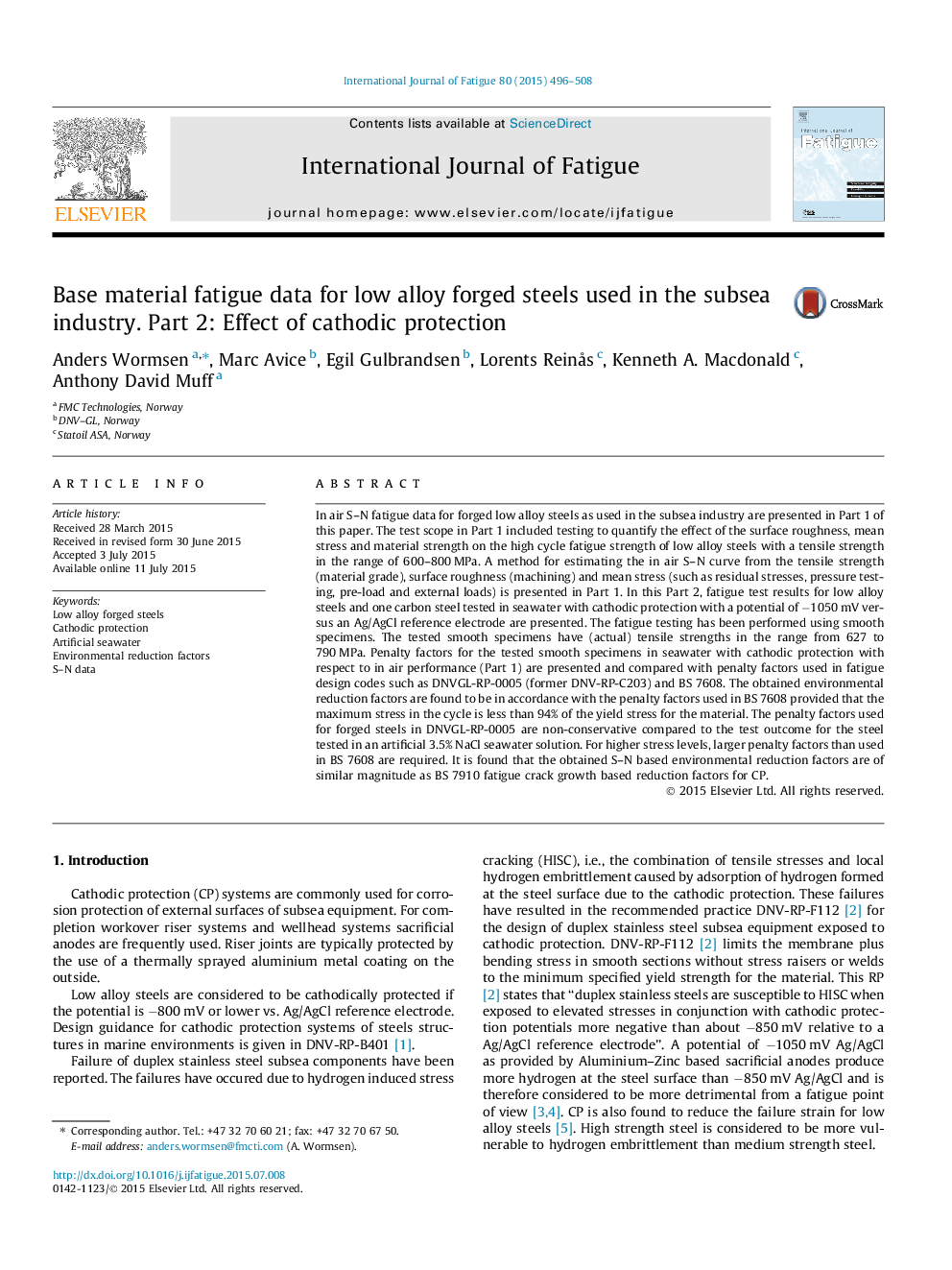| کد مقاله | کد نشریه | سال انتشار | مقاله انگلیسی | نسخه تمام متن |
|---|---|---|---|---|
| 776579 | 1463752 | 2015 | 13 صفحه PDF | دانلود رایگان |
• We present fatigue test results for steels in seawater with cathodic protection.
• Penalty factors for the steels with respect to in air are presented.
• The penalty factors are compared with factors used in design codes.
• The penalty factor depends on the maximum stress in the cycle.
• For maximum stresses below yield, a penalty factor of 2.5 can be used for the tested steels.
In air S–N fatigue data for forged low alloy steels as used in the subsea industry are presented in Part 1 of this paper. The test scope in Part 1 included testing to quantify the effect of the surface roughness, mean stress and material strength on the high cycle fatigue strength of low alloy steels with a tensile strength in the range of 600–800 MPa. A method for estimating the in air S–N curve from the tensile strength (material grade), surface roughness (machining) and mean stress (such as residual stresses, pressure testing, pre-load and external loads) is presented in Part 1. In this Part 2, fatigue test results for low alloy steels and one carbon steel tested in seawater with cathodic protection with a potential of −1050 mV versus an Ag/AgCl reference electrode are presented. The fatigue testing has been performed using smooth specimens. The tested smooth specimens have (actual) tensile strengths in the range from 627 to 790 MPa. Penalty factors for the tested smooth specimens in seawater with cathodic protection with respect to in air performance (Part 1) are presented and compared with penalty factors used in fatigue design codes such as DNVGL-RP-0005 (former DNV-RP-C203) and BS 7608. The obtained environmental reduction factors are found to be in accordance with the penalty factors used in BS 7608 provided that the maximum stress in the cycle is less than 94% of the yield stress for the material. The penalty factors used for forged steels in DNVGL-RP-0005 are non-conservative compared to the test outcome for the steel tested in an artificial 3.5% NaCl seawater solution. For higher stress levels, larger penalty factors than used in BS 7608 are required. It is found that the obtained S–N based environmental reduction factors are of similar magnitude as BS 7910 fatigue crack growth based reduction factors for CP.
Journal: International Journal of Fatigue - Volume 80, November 2015, Pages 496–508
